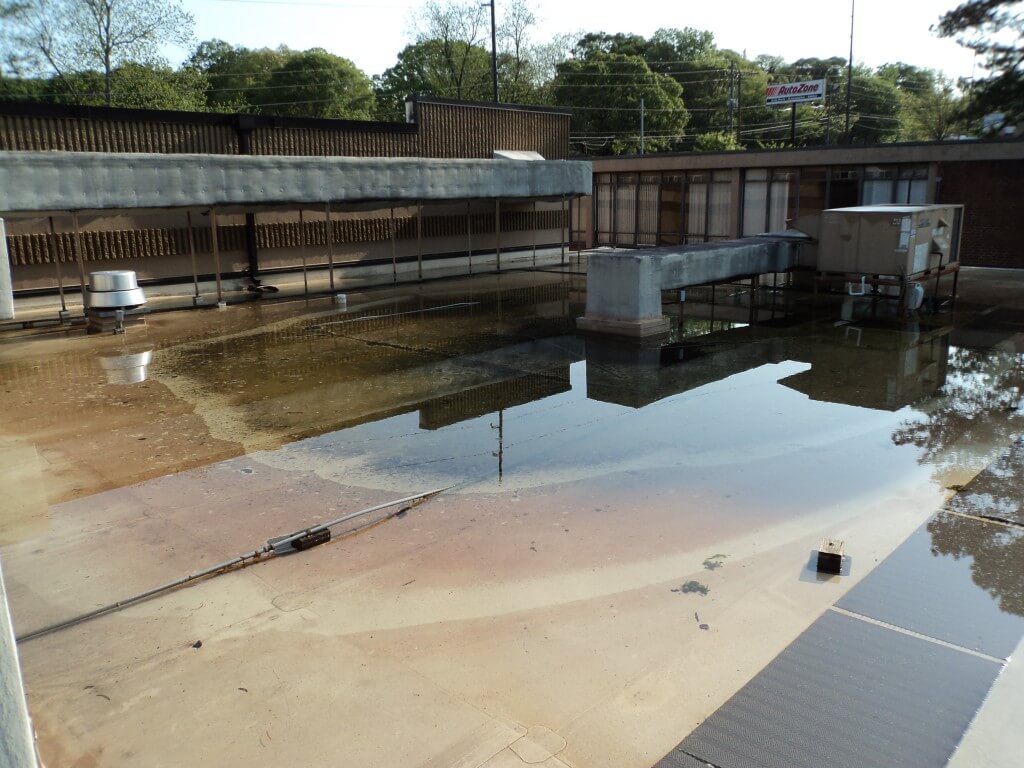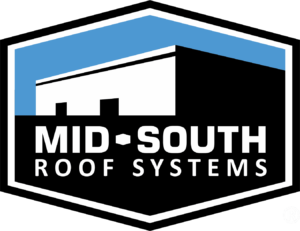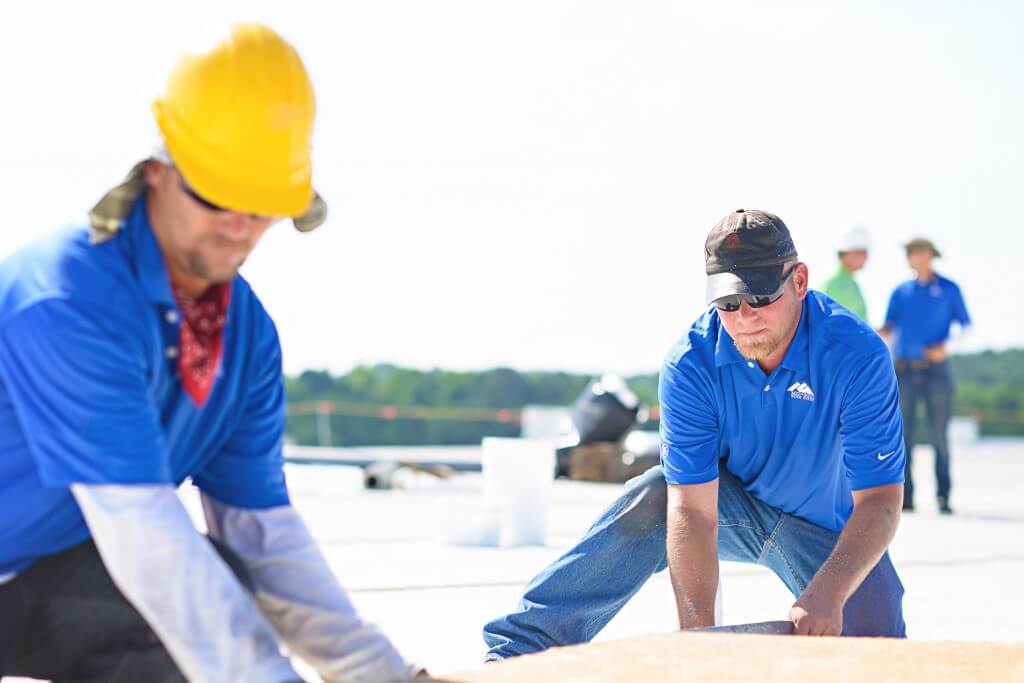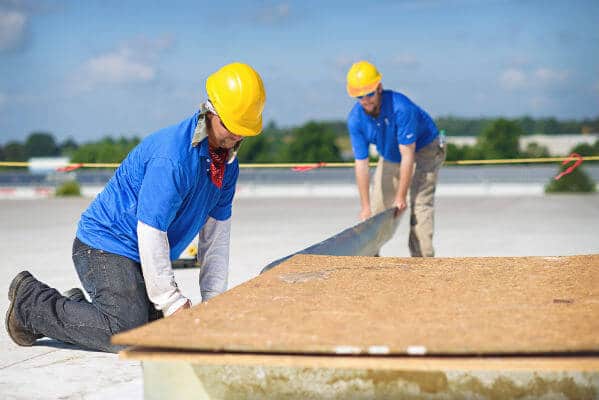Hazards Up High: Protect Your Roof


The three most common threats facing a newly installed roof are punctures, cuts, and scratches. The reason for this has to do with the makeup of the roof itself.
The Composition of a Roof
Roofs are like the Earth—they have three distinct layers and they’re made mostly of salt water. OK, that last part isn’t true, but they definitely have three layers.
The top layer, exposed to the world, is the weathering surface. This flexible membrane resists UV rays, which are emitted by the roof-killing sun. In between is a plastic mesh that gives the roof toughness and rigidity. The bottom layer comprises the bulk of the roof—nearly half of its entire thickness.
If a deep scratch, gouge, or puncture slices through the outer membrane, your roof loses its weatherproofing and the vulnerable layers underneath are now exposed. The sun is now boring through its weak interior, and water is creeping in. Does this mean that you’re going to get a leak the first time it rains? Maybe not, but in a few years the integrity of your roof will be compromised.
Secondary Hazards
While ponding water itself isn’t a direct hazard, and won’t void your warranty, water can magnify dangerous ultraviolet rays, aiding the sun’s ongoing mission to obliterate your roof.
Certain chemicals can harm your roof. If your building deals with chemicals, like a paint facility, consider a chemical-tolerant PVC roof. While chemicals may seem an obvious hazard, grease traps that operate on the roof are just as dangerous—but they are often overlooked. Overflowing, poorly maintained, or malfunctioning roof grease traps can leak animal fats and grease, which can break the roof down over time.
Finally, Alfred Hitchcock was right. Birds are hideous monsters that are bent on destroying the human race—and they’re starting with our roofs. Birds—especially in high concentrations as are found near water or landfills—can leave a buildup of droppings up to 4 inches deep across a roof surface with the same square footage as 10 football fields. They also carry and drop sharp objects like bones, creating an EPA hazard zone on top of your roof.
Aside from seagulls, you are your own worst enemy. Educate anyone with roof access about the dangers of dropped tools or machines. Protect your roof to avoid replacing it.
LIKE WHAT YOU JUST READ?
Sign up for our newsletter to get fresh articles, updates and more!
Assess, Report and Decide: Get to Know Your New Building’s Roof
If you’re considering buying a new building, the very first item on your list should be to get an assessment of the roof’s condition. This analysis can prevent surprises down the line and—if the roof needs work—it can have a dramatic effect on the price you wind up paying for the building.
Why You Need A Roofer Onsite When You Install Your HVAC System
It’s common to place the heating, ventilating and air conditioning (HVAC) systems for large buildings on the roof. A successful rooftop HVAC installation usually involves the collaboration of an entire team of workers, so that issues related to the roof, structures, electrical and HVAC can be discussed beforehand. If an HVAC system is not coordinated…


